Internet of People Revolusion
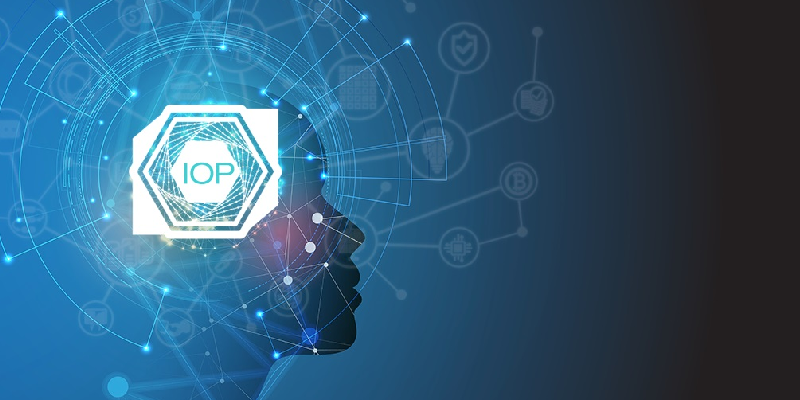
Internet of People Revolusion

!- search : "Internet of People"
Internet Of People
We need Open, Commons based, peer produced, EverGreen, co-evolving InterPersonal Networks of Autonomous HyperMedia Spaces connecting People, Ideas and Things.
It is as simple as that
The Internet of People protocol
x
Ecosystem ReviewJanuary 2021
!- reading list, for : content addressing, dWeb

!- for : content addressing, dWeb

calabilityPeergos can handle arbitrarily large files, including random access, upload and download, and on under-powered devices like mobile phones. This is largely due to the independent encryption of each 5 MiB section,as well as the "zero IO" seeking within a file
zero io seeking
Peergos
storage and application protocol on top of IPFS
Solid (derived from "social linked data")
solid
IPFS - Content Addressed, Versioned, P2P File System(DRAFT 3)
!- about : IPFS
!- reading list : content addressing, dWeb
NDN names are opaque to the network, i.e., routers do not know the meaning of a name (although theyknow the boundaries between components in a name). This allows each application to choose the namingscheme that fits its needs and allows the naming schemes to evolve independently from the network
NDN names are opaque to the network
router then stores the Interest in the Pending Interest Table (PIT
Pending Interest Table
Communication in NDN is driven by the receiving end, i.e., the data consumer. To receive data, aconsumer sends out an Interest packet, which carries a name that identifies the desired data
driven by data consumer
interest packet
name-based routing protocol
name-based routing protocol
Data-Centric Security
Named Data Networking (NDN) Project
reading list : content addressing, dWeb
about : Named Data Networking
The NDN project was funded by NSF in September 2010 as one of the four projects under NSF’s Future Internet Architecture Program.
Future Internet Architecture Program
The Named Data Networking (NDN) project aims to develop a new Internet architecture that can capitalize on strengths — and address weaknesses — of the Internet’s current host-based, point-to-point communication architecture in order to naturally accommodate emerging patterns of communication. By naming data instead of their locations, NDN transforms data into a first-class entity.

Submitted on 14 Jul 2014] Title:IPFS - Content Addressed, Versioned, P2P File System Authors:Juan Benet Download PDF Abstract: The InterPlanetary File System (IPFS) is a peer-to-peer distributed file system that seeks to connect all computing devices with the same system of files. In some ways, IPFS is similar to the Web, but IPFS could be seen as a single BitTorrent swarm, exchanging objects within one Git repository. In other words, IPFS provides a high throughput content-addressed block storage model, with content-addressed hyper links. This forms a generalized Merkle DAG, a data structure upon which one can build versioned file systems, blockchains, and even a Permanent Web. IPFS combines a distributed hashtable, an incentivized block exchange, and a self-certifying namespace. IPFS has no single point of failure, and nodes do not need to trust each other.
reading list : content addressing, dWeb
from :
A protocol & event-sourced databasefor decentralized user-siloed dataDraft 1.6 - Textile ThreadsPick1, Farmer1, Sutula1, Hagopian1, Gozalishvili2, Hill1 and11Textile.io2Mozilla.orgRevised May 20, 2020
!- about : Textile, Textile.io
!- reading list : IndyWeb
!- reading list : content addressing, dWeb
!- for : web3 constellations - IndyWeb
!- summary :
![]()
![]()
!- reading list : IndyWeb
!- reading list : content addressing, dWeb
!- for : web3 constellations - IndyWeb
!- summary :
![]()
There are a number of systems that utilize content-basedaddressing to access content and information (e.g. Git,IPFS, Perkeep, Tahoe-LAFS, etc)
!- for : content-based addressing, content addressing, name data networks
!- intro : Perkeep
I've implemented CHAMP [0] for Peergos in the IPLD/IPFS setting, largely based on the Steindorfer paper. There is one improvement that whyrusleeping from ipfs came up with which is to allow a small number of hash collisions in a level, before pushing things down a level.
!- about : Peergos Compressed Hash-Array Mapped Prefix-tree !- for : PeerKeep - annote : https://hyp.is/8PYn0BfYEe2xxXdi_LlC6g/docdrop.org/video/g1vzoZjG9Zo/
so this is it's a it's a feed of of things that have been shared with you by people that you follow in pagos and obviously it's end-to-end encrypted so it's 100 client-side assembled
if you run pagos locally then you can view it at username.pagos.localhost and if you're viewing it that way then it's totally independent of dns
run peergoss locally
independent of dns

Peergos presents “The Private Web”

Lab Day 2018 // Peergos Architecture - Dr. Ian Preston
Peergos
Today is a big step forward for Hypothesis! We're announcing a new Public Benefit Corporation, Anno, and a major investment by ITHAKA/JSTOR and others to take us forward. Seeing others get behind a universal standard for the conversation over all knowledge is incredibly energizing. https://lnkd.in/giTfPfMy Thanks to Kevin Guthrie and many others for believing in this vision!
technologies for open and decentralized public conversation.
open decentralized conversation
A Self-Authenticating Social Protocol
0 self authenticating social protocol
4 self-authenticating Interpersonal IndyWeb
0 beyond protocols we can have (commons based peer-produced interpersonal constellations)[web+indy:about - The IndyWeb]
commons based peer produced constellations

Peergos@PeergosIf you migrate to a different server, then all existing links to your content continue to work and you keep your social graph without needing to tell anyone your new host. It's magical. Compare this to changing email, where you must tell all your contacts about your new address.

Légy egy fűszálon a pici él S nagyobb leszel a világ tengelyénél.
Be on a single grass the teeny blade
And greater you be you than the world's axis
Hiába fürösztöd önmagadban, Csak másban moshatod meg arcodat.
about : selfing =
In vain you bathe in your self,
only in other can wash your face.
Curating and exploiting such an ontology will be as important as thehardware and software surfaces that activate it
ontology
Eric Anderson joined as CEO
!- claim : Eric Anderson - ceo of - Intentional
!- meta - experimental ; adding triples on the fly in TrailMarks - Semantic Web Triples are claims - they can be written down as proporsition - subject - predicate -object - write them as a clue as in this example - on the margins, in context - or as part of any TrailMarks page or clue - and with that you can have the Semantic Web - as a proper subset of MindGrapj - and the TrailMarks notation - as "Thought Vectors" can bring them into - the emergent Permanent Autonomous Digital Spaces - on the IndyWeb weaving a people centred - internet connecting People, Ideas, knowledge of things and EverGreen Permanent Self-Archived Intentional Software needed to work with them -

Fast seeking and encrypted history Published: Thu 01 August 2019
reproducible builds (we don't use npm or browserify etc.)
reproducible builds
Peergos is fully open-source
open source
Multi-device login
There is also no central dns name or TLS certificate authority that could be used to attack the network.
Self hosting
The social network in Peergos is similar to Twitter or Instagram where any user can send another a follow request. The target user can accept, accept and reciprocate, or deny. Who follows who is not visible to us or the network.
private social network
Brian Cantwell Smith Prof of Information, Philosophy, and Computer Science
ethics is concerned with how reality should be.
When at odds with reality, science changes theory, while ethics changes reality
THE TRANSITION FROM THE SCIENTIFIC AGE TO THE ETHICAL AGE IS A PREREQUISITE FOR SURVIVAL OF HUMANITY
Smith’s research focuses on the philosophical foundations of computation, artificial intelligence, and mind, and on fundamental issues in metaphysics and epistemology.
!- research - focus - philosophical foundations of - computation - artificial intelligence - mind - fundamental issues in - metaphysics - epistemology
!- search : brian cantwell smith contact
Building Bicycles for the Mind

ToolsForThinkingHow New Technologies are Changing How We Create, Share, and Build Knowledge
Happening at betaworks
Open link in new window.
Open link in a new tab.
Open a link in a new window Hold Shift and click the link
!- do how : open link in a new window - chrome now gives you a - searchable reverse chronologic listing of all open tabs - now that I use desktops on Windows - it make sense to open links in new window - so when you look at the current desktop - you can see a thumbpring of all your windows
Future of Open Scholarship: Open Monograph Ecosystem Impact Analysis
!- from : https://hyp.is/8cb_oh-lEe26sAMHgS1qNA/investinopen.org/research/future-of-open-scholarship/
Open MonographEcosystem Impact Analysis
!- from : https://hyp.is/C3_-2h-mEe2zJhcMfcAOlQ/zenodo.org/record/5151804
Open Monograph Ecosystem Impact Analysis (brief)
brief
Future of Open Scholarship

We conduct and commission research to increase our understanding of the current landscape.

Open, community-owned infrastructure is necessary for research to thrive.
!- concept : Open community-owned infrastructure - for open - technologies - systems - supporting : - research, and - scholarship - challenges : conducting research - working with : decision makers
Helping you invest in the open technology that research relies on.
Everyone Included: Hypothesis Accessibility Reaches WCAG 2.1

freeing of information from proprietary systems and formats
!- resonate with : open, non proprietary format
fluid collaboration between individuals,
!- value prop : IndyLab
rapid access to knowledge as it evolves
co-evolution of knowledge along with the tools that create it
a universal conversation layer
!- value prop : IndyNet
The idea of a shared conversation layer over the world’s knowledge is part of the original idea behind the Web.
!- value prop : IndyWeb - shared conversation layer is part of the original idea
bringing conversation to all knowledge.
Aug 24-28 ✵ Camp Navarro, CA

o with freedom—and I know this is a cliché, but hopefully not in thiscontext—with freedom of that sort comes enormous responsibility. And it’sparadoxical. Responsibility to dream and, coexisting and simultaneous withthat, an obligation to awaken. In other words, an obligation to make sense, benon-trivial, not to squander resources in foolishness. An obligation to awaken,and an obligation to, at the same time, dream. And then the rational mindscreams out, “But this is impossible! �is is paradox!” But the subtle mind un-derstands that we have now reached square one. By openly confronting thenecessity for paradox, and by openly confronting the fact that we can only en-close our dilemma by speaking in at least two modes at once, we begin to actu-ally honor the complexity of the situation.
Terence McKenna: Life, Lectures, Philosophy, & Quotes

About 5 results (0.31 seconds)

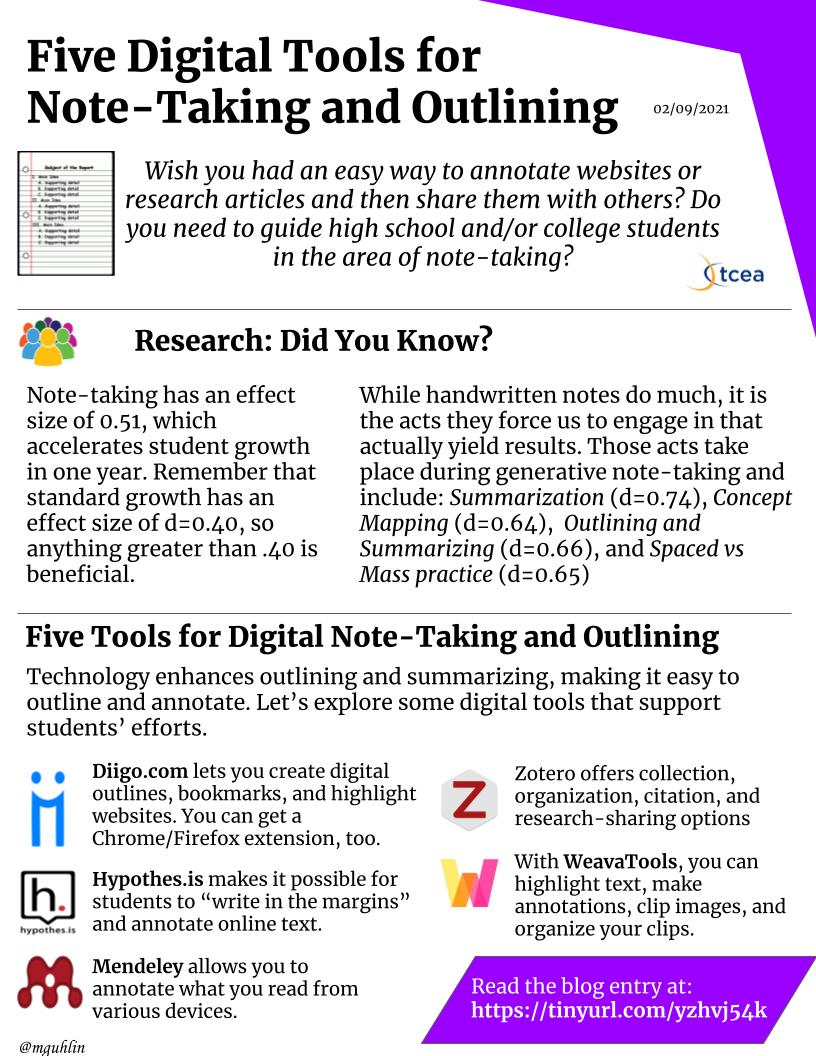
A data project doesn’t start with an idea of whatthe functionality needs to be, but rather focuses on what insights or actions need to be gleanedfrom the data in whatever current shape it’s in
not teamand technology, what could it be?
One of the biggest insights from these AI successes is that they don’t see AI projects asapplication development or functionality-driven projects
The One Practice That Is Separating The AI Successes FromThe Failures

The One Practice That Is Separating The AI Successes From The Failures

One of the biggest insights from these AI successes is that they don’t see AI projects as application development or functionality-driven projects. Rather, they see them as data projects, or sometimes even data products. A data project doesn’t start with an idea of what the functionality needs to be, but rather focuses on what insights or actions need to be gleaned from the data in whatever current shape it’s in.
!- summary : - data project/product - not about what the functionality needs to be - focus on what insights needs to be gleaned from the data
!- meme : data is people in disguise - need to glean the insight that Jared Lanier put forward - that information IS people in disguise - and conclude everything must change
Commons-oriented groups and networks address these social and ecological strains by coming together to change the dynamics of very complex systemic problems.
Unfolding our founding principles

Unfolding our principles
to create something different, we have to work differently. We are dedicated to supporting you and your teams as the world transforms the ways we work together.
aim to to make cross-group coordination faster and more effective in support of changemaking teams cooperating towards a world they want.
cooperating towards a world they want
Principles

TrailHub@TrailHub1·Jul 16, 2021Asked the question: What "field" is my research in? It has been called "Augmentation Research" Chapter 9 of @hrheingold's classic "Tools for Thought" https://hyp.is/5sOELOZxEeu7LIcMqK1LBQ/www.rheingold.com/texts/tft/09.html… "The Loneliness of a Long-Distance Thinker" is about Doug Engelbart & the Augmentation Research Center
Tools for Thinking Conference New York
Jump to
like the way outline of content can be revealed

team health
hold on to our humanity despite all the forces opposing it
standard playbook for developing high-performing teams doesn't work
!- response : Our best practices are for the Worst
Ever since the ethos of the "Worse is Better" rose 30 odd years ago
Want a High Performing Team? F&*k Productivity, Focus on Team Health
productivity wrong focus
!- comment : - like mindfullness designed to make microserves more productive
Autonomy is about having the trust and authority to make important decisions about how we fulfill our responsibilities and accomplish our goals.
inspiring perspectives could go viral -- rather than confining perspectives trap us in filter bubbles?
inspiring perpectives go viral
write our own filters and share them with others
share filters
join the simple facts with our impressions, opinions and evidenc
join facts with impressions opinions
capture what we observe in facts and in thought co-elaborate and make better decisions choices
make my own choices about which of my data to share with whom or to make public
choose what to share, with whom in my own terms!
work directly with ideas not just bare words, numbers and pictures?
communicate our thoughts and link them up with the thinking of others, preserving all the connections, evidence and history?
!- value prop : IndyWeb - communicate our thought - link them up - with thinking with others - preserving all the - connections - evidence - history
!- respond : do all that as Autonomous Actor in an emergent self-organizing emergent Open Commons based peer produced networks of networks of People Ideas Intents and Software as a conversation
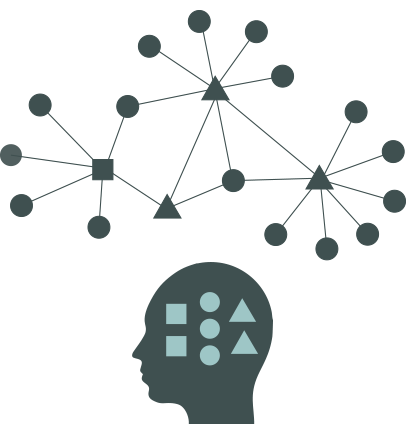
What we lack is a tool for people to manage data, concepts, opinions and software in a way that supports all the kinds of thinking, showing, working, trading and sharing we need to do.
hard work to bring it all together
!- value prop : IndyNet - stop the scattering - be your own(ed) hub - in your own(ed) network - eventually connecting everything L People, Ideas and Things
POSSE is a good start
Be your own Hub syndicate elsewhere
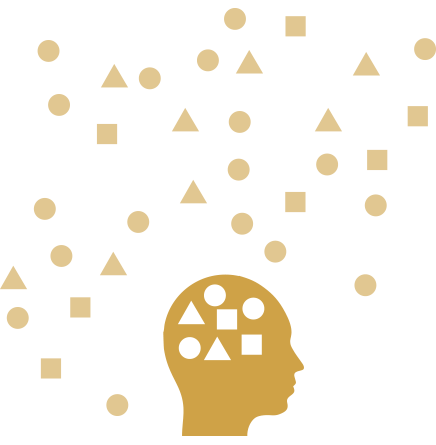
We are drowning in our own productivity.
scalable collective human cognition
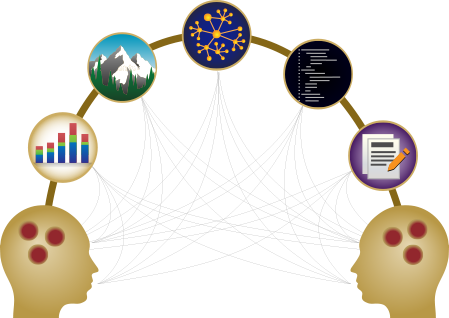
Hi! I'm Shawn Murphy, a Canadian software architect living in Berlin.

Projects
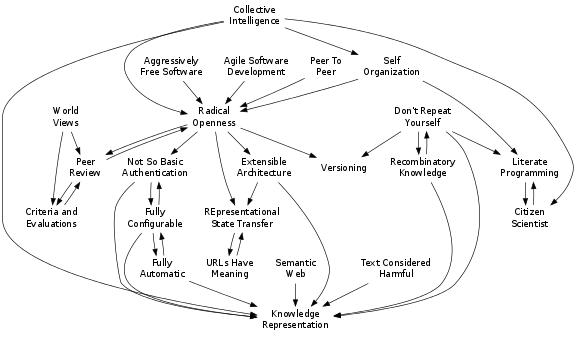
Creating a distributed, globally-scalable, knowledge-based, collaboration platform augmented with criteria and evaluations as the basis for a self-organizing system capable of fostering the evolution of ideas

!- objectives : Nooshperic Software Foundation - creating an augmented self-organizing collaboration platform fostering evolution of ideas supporting Open Global Collective Intelligence
!- collaboration platform : - distributed - globally-scalable - knowledge-based
!- augmented with : - criteria - evaluation
!- basis for : - self-organizing system - fostering evolution of ideas
!- supporting : - Open - Global - Intelligence
Developing software tools incorporating elaboration, evaluation, and evolution at the core of their design and operation,
!- objectives : Nooshperic Software Foundation - software tools - elaboration - evalutation - evolution - design - operation
HuViz: Scriptable, Interactive Linked Open Data Explorer
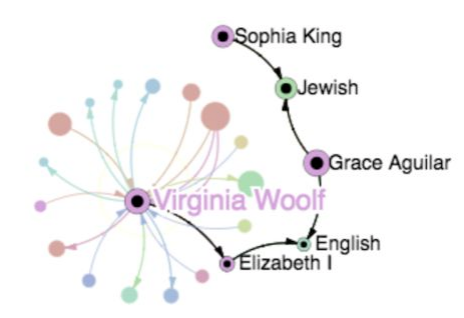
!- reading list : IndyWeb
A Collaborative Linked Learning Space

Data is expressed in open, non-proprietary formats
open non-proprietary format
The Data-Centric Manifesto the
!- manifesto : IndyWeb
No SPOF: don't rely on any single party (including yourself) Your data should be alive in 80 years, especially if you are
Data is self-describing and does not rely on an application for interpretation and meaning.
The most important principle
That makes data exchangeable and decouple dependence on applications doing their magic to lock you in
!- from : https://hyp.is/xuutnh1yEe2u1WPRagsjEw/twitter.com/kvistgaard/status/1559188292108783617
Ivo Velitchkov@kvistgaardReplying to @jessmartin @TfTHacker and @BearNotesAppYes, that's what I meant. If you open an MD with several tools and you write in one of them, all others should show the change with small or no delay. That's the app-content decoupling I meant for this classification. Half-way to data-centricity http://datacentricmanifesto.org
It refers to an instance of a clearly identifiable conceptual or material entity. The entity must be notable, in the sense that it can be described using serious and publicly available references.
this is a deal breaker if you are working at the edge of knowl'edge
Redecentralization
!- reading list : IndyNet, IndyWeb !- claim : Decent(ralization) is not enough, need InterPersonal Networkes connecting individuals as autnomous actors with each other, entities and ideas
!- reading list : IndyWeb
!- reading list : IndyWeb
!- reading list : IndyWeb
The state of the web
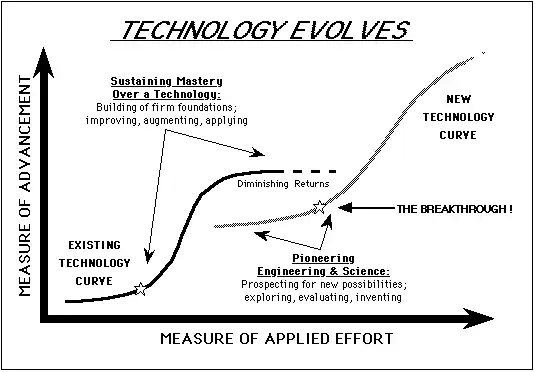
!- reading list : IndyWeb
mechanism, known as the Actor Model
!- known as : Actor Model - annote : https://en.wikipedia.org/wiki/Actor_model#annotations:Zfs23BzBEe2Qmdcj5aIV1A
An Actor is a lightweight computational unit
!- gloss : actor - light weight computational unit - similar to thread - resource efficient - supervise actors in a managed hierarchy - contain failure
!- reading list : IndyWeb
eliminatinginformation of low interest, providing navigation clues and recommending interesting paths of exploration. Asdifferent users have different goals and interests, AH systems adapt their assistance based on user modelswhich capture information about the users
!- provide what : Adaptive Hypermedia System - navigation clues - accomplish : Adaptive Hypermedia system - eliminate information of low interest - recommend interesting paths to explore - based on user models which capture information about the user
!- super power : IndyWeb - delivers the capabilities to adapt the hypermedia system to the needs to the one that uses it - All information about the one who is using the system is available off line
Liberman’s implied argument isthat adaptive interfaces could be a solution to the problem of information overload that Web users face today
!- concept : adaptive interfaces - antidote to information overload on the Web
Actor model
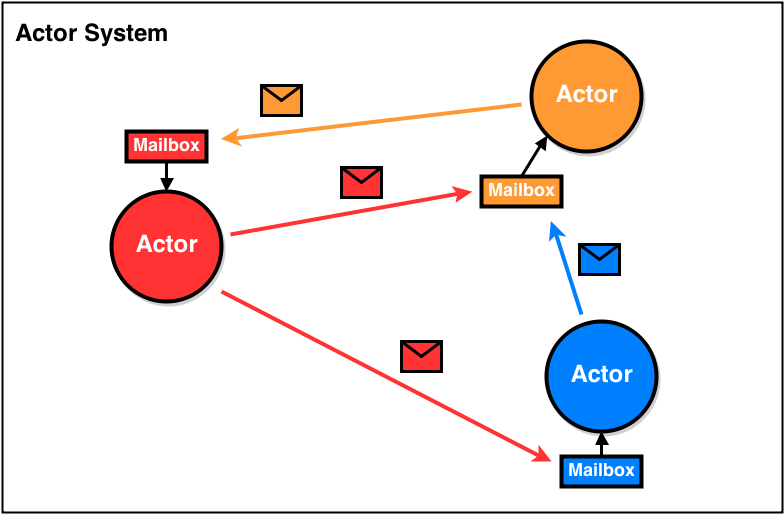
!- private notes : * - propose : IndyWeb Intents are like actors
I'm paging you now because I'm helping organize a series of events around Tools for Thinking, starting with this event on Tuesday: https://lnkd.in/gmJ46wZK
tools for thinking event
As I write this, a 29-year-old developer of the Tornado Cash protocol has also apparently been arrested in Amsterdam. Jeez.
Jeez
Github has removed Tornado Cash’s source code and banned source contributors (hence the need for decentralized alternatives like Radicle).
While Radicle was initially built using the InterPlanetary File System (IPFS), the team later decided that the IPFS did not satisfy the performance requirements required by the project.
IPFS did not satisfy the performance required
Radicle (RAD): An Open-Source Github Alternative
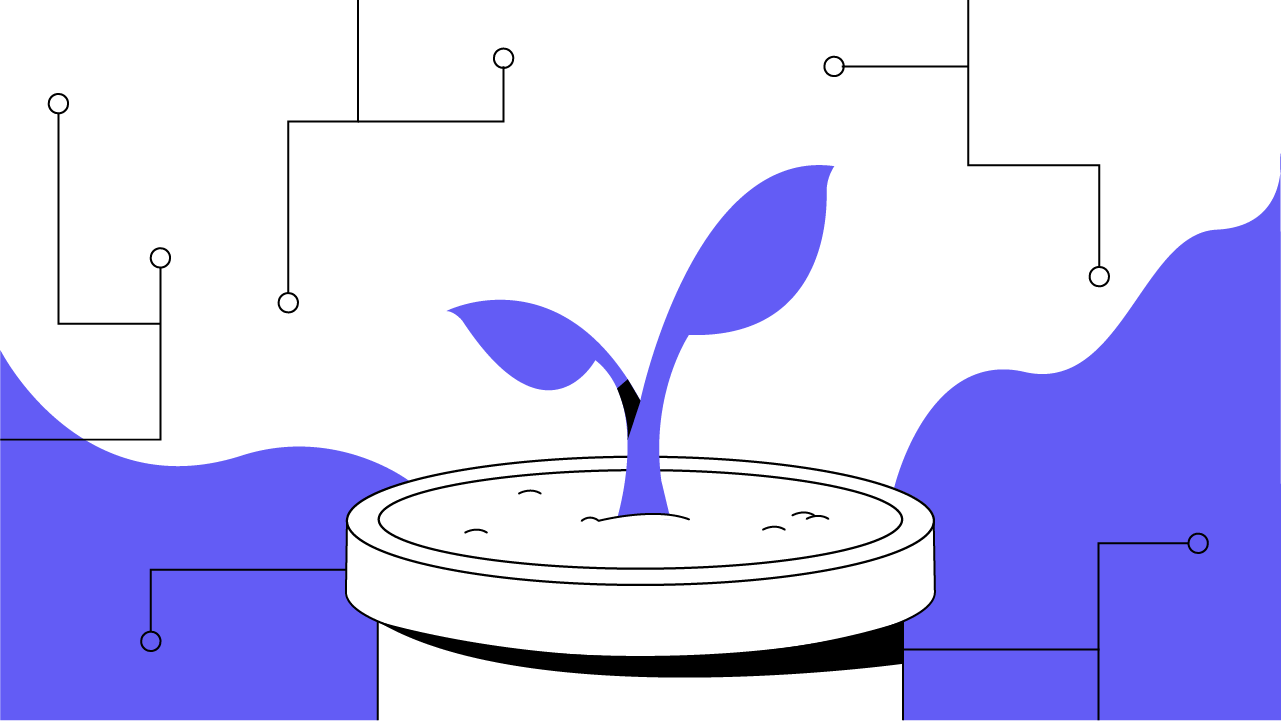
Web Share API W3C Editor's Draft 12 July 2022
!- podcast : Eric Weinstein on Edugenic Harm and Neurodiversity
Eric Weinstein on Edugenic Harm and Neurodiversity
!- concept : Edugenic Harm
!- concept : Neuoidiversity
That’s why a scientist looking at my brain and seeing this pattern should ask me what I feel, because the pattern is not the feeling itself, just a representation of it.”
!- claim : not represent, but re-present, nay present
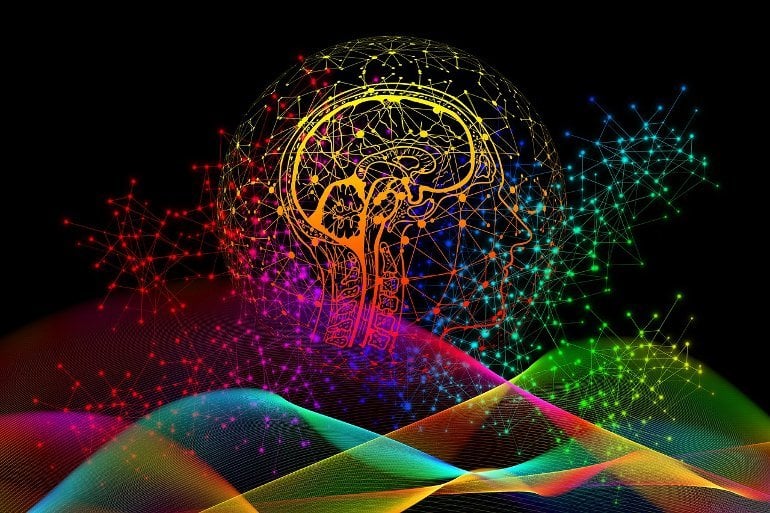
Ronen Tamari@rtk2541/Excited to share some new work on collective sensemaking! We’ll present it in the Blue Sky Ideas track (~open, exciting areas for R&D) of the upcoming @ACMHT This is a collective effort of @daostack, Veeo, @InferenceActive @CSenseMakers @HyadataLab https://arxiv.org/abs/2205.06345
7/Stigmergy refers to the phenomena of indirect coordination mediated by modifications of the environment, eg ant pheromone trails. The crazy part is that the env acts as a kind of distributed memory system for a collective organism: https://sciencedirect.com/science/article/abs/pii/S1389041715000327
16/ interoperable protocols/storage for stigmergic primitives can enable bootstrapping existing PKP growth for *collective* sensemaking/knowledge.
Decentralized OrganizationShape a new structure, which is collaborative, autonomous and transparent.
“It is wrong to think that the task of physics is to find out how Nature is. Physics concerns what we can say about Nature.” Well it turns out that if we pay attention to this subtle difference, some of the most mysterious aspects of nature make a lot more sense. What is physics really trying to do? Is it to find the mathematical laws that govern the universe?
not to find out
founders of quantum theory were convinced that the role of physics was one step further removed still. Neils Bohr insisted that what we actually model is the results of observation, not the world itself.
step further removed
model the results of observation
The greatest minds, as they are capable of the highest excellences, are open likewise to the greatest aberrations. —René Descartes, 1637, A Discourse on Method
minds open
Cognitive Limits to Natural Knowledge Creation
cognitive limits of knowledge creation
It assumes the centrality of knowledge forthe rise of Western modernity; and it illustrates that with regard to their knowl-edge foundations, such a rise was not a natural process but an unnatural one,critically relying on path-dependent factors that might not repeat elsewhere.Because it enabled the West to transcend the inherent limits of the humanmind, I call this process the “great knowledge transcendence.”
centrality of knowledge for the rise of Western modernity
rise was not a natural process
but an unnatural one
West transcend the inherent limits of the human mind
ring the heyday of “the Whig interpretation of history,” history wasregarded as a natural and inevitable march toward modernity, including con-stitutionalism, freedom, science, technology, and capitalism.
Whig interpretation of history
inevitable march toward modernity
observed in fact or in thought
observed in fact or in thought
not everybody wants versioning not everybody wants encryption and privacy like i think that having this be a set of progressive upgrades would be really good but like i'm just wondering what the right substrate is
quick query on top of the new winfs stuff was like oh we got to plug like application specific merge semantics into how do we actually merge two files because as soon as you introduce versioning you get branching as soon as you get branching you wanna put those things back together and if 00:23:01 you wanna put those things back together and you just try to let a computer magically do it for you it's not gonna end well
arbitrary metadata in a second versioning not everybody needs but like it's pretty dope it's good to have um and we need some type of mutability like an aiming system that 00:21:04 that is robust and works
we really like we fully drink drink drank drunk drink still drink the content addressing kool-aid like i think that content addressing is 00:09:19 a fundamental like primitive that i want to see proliferate
content addressing is fundamental

ipfs sold as a bill of goods that it could not deliver on which uh is uh in many ways true and i want to get into some details on that
sold us goods it could not deliver on

IPFS þingþing (n). thing, assembly, meeting, council. parliament.
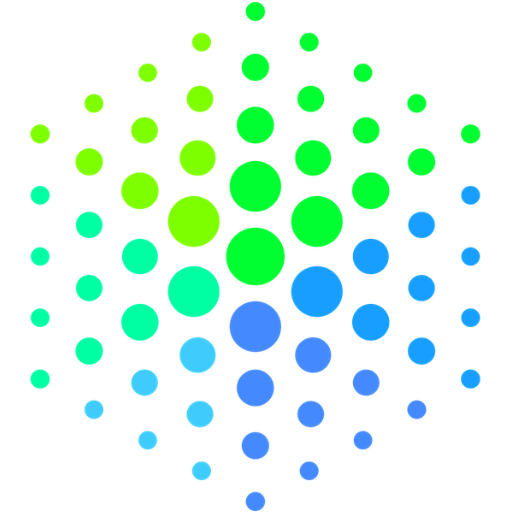
Marc-Antoine Parent 1st degree connection 1st Fondateur chez Solutions Conversence
!- connection : Marc-Antoine Parent - twitter : https://twitter.com/ma_parent
. Conversation is a method for converging on eventually consistent states among distributed peers.
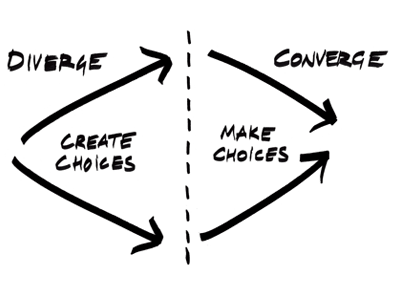
creative scenius between band members playing jazz, or among designers collaborating on a project.
!- slogan : TrailMark - scenius in collaborative spaces
https://hyp.is/Kbk67BhxEe2m9oPvDhCkZA/kk.org/thetechnium/scenius-or-comm/
!- do how : TrailMarks - shadow nonlinear links to salient explicative pages from a page with bi-directional links between annotations on a content containing the link and annotations created between the current page and the links target - also incorporate image from the target page in the current annotation - giving a strong visual clue that would highlight the connection even in scanning an annotation stream feed

Diverge/converge, the ur-shape of design.

A speaker flattens a cloud of connected ideas into a linearized subset. A listener unpacks them. The conversation loop.
!- about : Conversation - Symathesy - Everything is a Conversation - https://hyp.is/Kbk67BhxEe2m9oPvDhCkZA/kk.org/thetechnium/scenius-or-comm/
Scenius is like genius, only embedded in a scene rather than in genes. Brian Eno suggested the word to convey the extreme creativity that groups, places or “scenes” can occasionally generate.

Conversation theory is a cybernetic and dialectic framework that offers a scientific theory to explain how interactions lead to "construction of knowledge", or "knowing": wishing to preserve both the dynamic/kinetic quality, and the necessity for there to be a "knower
!- theory : Conversation - Software is a conversation - ∀ is a conversation - knowledge with the "knower" - knowing subject - Tacit Personal Knowledge - Michael Polanyi
!- do how : TrailMarks - treat annotation margins as part of your Mind's Graph - name the subject/topic that the annotated content is about and name in a trailmark your intent/intended meaning or some salient aspect of the subject/topic to which the annotation is relevant to - jot down free associations that come to mind - thereby the chances of surfacing via auto-association the annotation in the present context when you are working on a content using the words matching the free associations

∀ (FOR ALL) utf-8 character icon FOR ALL is one of the 256 characters in the Mathematical Operators Unicode subset.
Technography
x
Get more insight from TwitterTwemex is a browser extension for Twitter that automatically surfaces the most interesting ideas.It helps you spend less time mindlessly scrolling, and more time developing your thoughts

Expertise revisited, Part I—Interactional expertise
x
In a world filled with ever-more-complex technological, sociological, ecological, political & economic systems... a tool to make interactive simulations may not be that much help. But it can certainly try
Loopy
Socialroots Cross-group collaboration, simplified.
tummler is the person who keeps everyone else talking interestingly. Short version http://j.mp/tummler - long version is 100 hours of conversation http://tummelvision.tv.
Multiolayer TfT Chris Aldrich
Argument Technologies (and things that seem like they might be/become)Add shortcut to Drive
x
how we make sense of complexity in the world around us; how we turn confusion into action; and how we can overcome hubris to achieve meaningful systems change.
complexity system change

break inside the file they are declared. The reason for this issimple; those low-level objects return information to the interface(properties and methods) of the Motor and the Storage file NOT the Car fileitself.
low level objects in storage and motor cannot break the car
Logic Room PresentsThink!Like a UI Architect5 Critical Lessons for Framework-agnosticJavaScript UI App Design and Structure
framework agnostic UI app design
x
a crimp tree node for for each chunk of your file or directory and that can have links to the the encrypted file fragments and so the keys in this champ are 00:05:42 basically random um subsequent keys in a file are not random but they're still not deducible uh by the server so the storage Your Home Server can't figure out or can't link 00:05:54 the different chunks of the same file so we use that to hide the the tires of the file among among other ways the read correctly is pretty simple it's it's been discussed earlier but yeah 00:06:07 it's a tree of symmetric keys if you have one key you can follow the the arrows follow the links it also gives everything a well-defined path so if I just give you access to this file you can follow the parent links to get the names 00:06:21 so you have a path but you still can't see if there are any other files in that directory any siblings or anything like that the right tree is even simpler so there's just one key for each file or 00:06:34 directory these are all symmetric keys by the way in the previous slide um also the top ones are symmetric Keys these are obviously key pairs at the bottom um and the the metadata that we protect 00:06:49 file names file name sizes if you care about that uh the file sizes I've mentioned so there's a chunking part get you down to 00:07:00 modulo 5 Meg
!- design comment : analogous intents IndyWeb
instead of relying on cryptography relyh on interpersonal trusted communications full trusted audit trails
uniform data access methods
instead of getting files get associative complex neighbourhood with context specific inline articulation of illative/interpretative flows em logiccs
instead of random keys human readable context/intent bearing attributed names resolvable by creator on request responding with access complex as attributed page with ephemeral encryption etc

it's pure capabilities so you don't need to rely on a server to enforce Access Control it's fine-grained it's also stored in a champ we like Champs the ciphertext access access control is 00:04:09 a relatively new thing that's as of January this year we do that with things called block access tokens or bats
!- concept : pure capability

Gyuri Lajos, [09/08/2022 10:57] My BlackView mobile's charger inlet needs replacing instead of spending 13000 ft on repair I bought an halfway degoogled Colour OS phone for 18000 ft
Gyuri Lajos, [09/08/2022 10:57] It is not bloated with preinstalled junk software
Gyuri Lajos, [09/08/2022 10:58] that u could not install
Gyuri Lajos, [09/08/2022 10:59] It is a smaller form factor the one u can still write on super fast
Gyuri Lajos, [09/08/2022 10:59] I installed telegram on or so normality or even better restored
Gyuri Lajos, [09/08/2022 11:02] And of course indylab is working on it and perkeep to
Gyuri Lajos, [09/08/2022 11:06] I propose the name 'peerkeep' for the indywebnative companion that leverages perkeep that hosts, archives and synchronizes private data across all your devices and your huddles and heirloom family storage hub.
whirlwind tour of pergos
``` Gyuri Lajos, [09/08/2022 10:57] My BlackView mobile's charger inlet needs replacing instead of spending 13000 ft on repair I bought an halfway degoogled Colour OS phone for 18000 ft
Gyuri Lajos, [09/08/2022 10:57] It is not bloated with preinstalled junk software
Gyuri Lajos, [09/08/2022 10:58] that u could not install
Gyuri Lajos, [09/08/2022 10:59] It is a smaller form factor the one u can still write on super fast
Gyuri Lajos, [09/08/2022 10:59] I installed telegram on or so normality or even better restored
Gyuri Lajos, [09/08/2022 11:02] And of course indylab is working on it and perkeep to
Gyuri Lajos, [09/08/2022 11:06] I propose the name 'peerkeep' for the indywebnative companion that leverages perkeep that hosts, archives and synchronizes private data across all your devices and your huddles and heirloom family storage hub. ```
* A Compressed Hash-Array Mapped Prefix-tree (CHAMP), a refinement of a Hash Array Mapped Trie (HAMT)
!- gloss : CHAMP
Sadly, these things were meant to help you but they haven’t…
Yes
I opened my desk drawer and took out a copy of Zhuan Falun. While holding the book in my two hands and facing him, I said, "Please read the book carefully, and think about it. If you have the determination to quit, I will try my best to help you."
Zhuan Falun
If you smoked and practised Qigong , you would still be healthier then if you smoked and did not practise Qigong though.
Rene ChampagnePractising Falun Gong
falun gong
Ours is an age of AGI
The Greeks held:
"evil appears as good in the minds of those whom god leads to destruction".
and remember Frank Herbert:
"Thou shall not make machines in the lik https://hyp.is/MCnKIBe1Ee2LwLuHVyXG8A/en.wikipedia.org/wiki/Whom_the_gods_would_destroy
Thou shalt not make a machine in the likeness of a human mind. Thou shalt not disfigure the soul.
"τὸ κακὸν δοκεῖν ποτ᾽ ἐσθλὸν τῷδ᾽ ἔμμεν' ὅτῳ φρένας θεὸς ἄγει πρὸς ἄταν" to mean that "evil appears as good in the minds of those whom god leads to destruction".
"add marginal notes and comments," and "build a trail of his interest" through the larger information space.
trails of interests
information space
Still Building the Memex

This is an additional 170 words/4000, and paraphrases an opinion most famously put forward by Michael Polanyi, a Hungarian-English polymath of genius level, who made contributions to chemistry, philosophy and economics, and who delineated the importance of “tacit knowledge” (that is, knowledge that was acted out but not necessarily articulated) in the transmission of specialized technical ability across the generations. Hudlicky was therefore criticized and pilloried by individuals on Twitter who appeared to know nothing of M. Polanyi’s work on tacit knowledge (for whom such ignorance was perhaps justifiable) but also by the editor of Angewandte, for whom such ignorance (voluntary or otherwise) was most certainly not.
Michael Polanyi
verbpast tense: interspersed; past participle: interspersedscatter among or between other things; place here and there."deep pools interspersed by shallow shingle banks"
!- gloss : interpersed
Event Notifications in Value-Adding Networks
Value-adding networks
Gasoline prices, 01-Aug-2022
prices